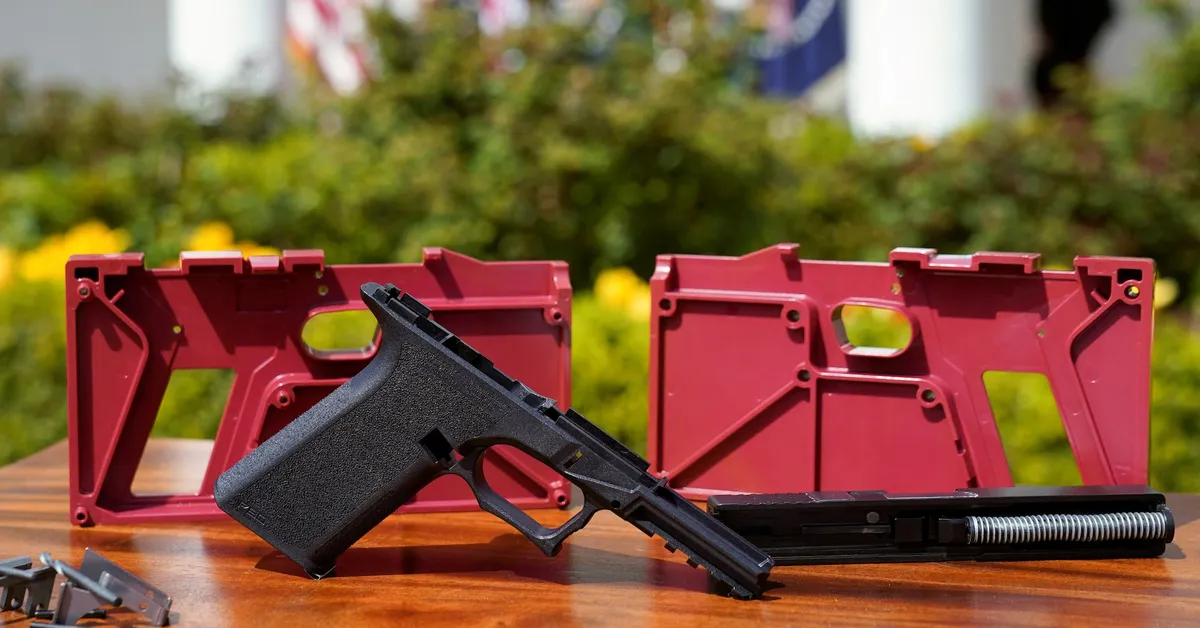
On March 26, 2023, the U.S. Supreme Court delivered a significant ruling regarding the regulation of ghost guns, affirming a regulation imposed by former President Joe Biden's administration aimed at controlling firearms that are often untraceable. This decision was reached with a 7-2 vote, authored by conservative Justice Neil Gorsuch, which overturned a lower court ruling that suggested the U.S. Bureau of Alcohol, Tobacco, Firearms and Explosives (ATF) had exceeded its authority when it issued the 2022 rule targeting parts and kits used to assemble ghost guns.
Ghost guns are firearms that can be easily assembled at home, often purchased online, and lack the serial numbers that are typically used to trace conventional firearms. This makes them particularly appealing to individuals barred by law from purchasing firearms, including minors and those with violent crime convictions. The absence of serial numbers and the lack of required background checks further complicate law enforcement's ability to trace these weapons back to their purchasers, which has contributed to their rising use in crimes across the nation.
In the aftermath of the ruling, gun safety advocates expressed their support, highlighting the decision as a lifesaving measure. Eric Tirschwell, the executive director of the advocacy group Everytown Law, stated, "We applaud the Supreme Court for doing the right thing by upholding a lawful and critical rule that protects public safety, and by rejecting the gun lobby's extreme legal agenda.” The regulation, which requires firearm kit manufacturers to mark their products with serial numbers, obtain licenses, and conduct background checks on purchasers, aligns with existing federal firearms laws.
The ruling came in response to a lawsuit filed by several plaintiffs, including parts manufacturers, gun owners, and prominent gun rights groups such as the Firearms Policy Coalition and the Second Amendment Foundation. They argued that the ATF's regulation imposed unlawful constraints on their rights. However, Justice Gorsuch asserted that the regulation is indeed consistent with the Gun Control Act, refuting claims that it could not apply to parts kits or incomplete frames.
The Supreme Court, which has a 6-3 conservative majority, has made notable expansions on gun rights in recent years. However, this ruling demonstrates a willingness to impose certain limitations. In previous decisions, the court upheld a federal law prohibiting firearms possession by individuals under domestic violence restraining orders while rejecting a federal ban on bump stocks, which allow semiautomatic weapons to fire rapidly.
In his opinion, Gorsuch reflected on the evolution of gun manufacturing, noting that technological advancements—such as 3D printing and the use of reinforced polymers—have made it increasingly easy and cost-effective for individuals to build their own firearms at home. He pointed out that the 1968 Gun Control Act was enacted following a wave of violence, and Congress recognized that existing measures allowed criminals to obtain untraceable firearms too easily.
The dissenting opinions, particularly from Justices Samuel Alito and Clarence Thomas, critiqued the majority's ruling, suggesting it represented governmental overreach. Bill Sack, the Second Amendment Foundation's director of legal operations, expressed disappointment, arguing that the ruling permits the government to redefine the law contrary to its original intent.
The United States, known for having the highest rate of gun ownership in the world, remains deeply divided over how to effectively address gun violence. As law enforcement continues to grapple with the challenges posed by ghost guns, which are difficult to trace, the implications of this ruling will likely resonate throughout the ongoing national debate on firearms legislation.
In conclusion, the Supreme Court's ruling on ghost guns underscores the complexities surrounding gun regulation and the ongoing efforts to enhance public safety amidst rising concerns over firearm-related crimes.